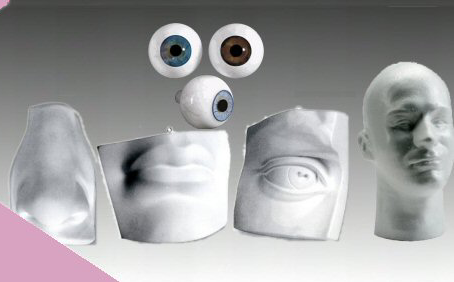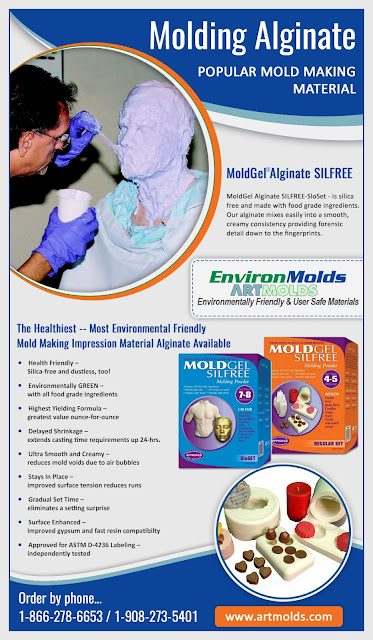There are different mold making and casting equipment that can be used to make bubble-free molds and casts. The suitability of a given equipment depends on the nature of the material and other factors.
One of the most taxing things when making a mold or cast is dealing with the air bubbles. Some air is bound to get trapped into the material no matter how carefully the artist mixes and pours the material. Once set, this shows up as unsightly warts on the surface of the mold/cast and makes it mostly unusable.
Fortunately, there are various tricks and even mechanical equipment for eliminating these pesky air bubbles. While pouring the material in a thin and steady stream from a corner and pricking the bubbles with a pin can help to some extent, it is always better to use an apparatus like vibrating table, pressure pot or a vacuum pump with vacuum chamber.
One of the most taxing things when making a mold or cast is dealing with the air bubbles. Some air is bound to get trapped into the material no matter how carefully the artist mixes and pours the material. Once set, this shows up as unsightly warts on the surface of the mold/cast and makes it mostly unusable.
Fortunately, there are various tricks and even mechanical equipment for eliminating these pesky air bubbles. While pouring the material in a thin and steady stream from a corner and pricking the bubbles with a pin can help to some extent, it is always better to use an apparatus like vibrating table, pressure pot or a vacuum pump with vacuum chamber.
This brings us to the question – which of these equipment is the most effective in getting rid of the trapped air in the mold making or casting materials?
Well, there is no single-point solution as such.
A vibrating table uses the simple technique of pulsating the material to shake out the bubbles. This will reduce the bubbles but cannot deair the material completely. Careful pouring will reduce the propensity of bubbles for sure.
On the other hand, a pressure pot is best suitable for materials that will cure to a rigid form. Like resins for example. It is better to avoid pressure casting soft rubbers as the air bubbles are bound to return once the mold or cast is exposed to normal air pressure. A rubber mold or cast is even likely to collapse in the areas where air remains trapped under the surface.
A vacuum chamber with pump is best suited for removing air from the rubber materials. Artists usually leave the rubber mold or cast to cure in the vacuum inside the chamber and the air will not return later!
All mold making and casting materials and equipment can be easily sourced from the EnvironMolds website, https://www.artmolds.com.
Well, there is no single-point solution as such.
A vibrating table uses the simple technique of pulsating the material to shake out the bubbles. This will reduce the bubbles but cannot deair the material completely. Careful pouring will reduce the propensity of bubbles for sure.
On the other hand, a pressure pot is best suitable for materials that will cure to a rigid form. Like resins for example. It is better to avoid pressure casting soft rubbers as the air bubbles are bound to return once the mold or cast is exposed to normal air pressure. A rubber mold or cast is even likely to collapse in the areas where air remains trapped under the surface.
A vacuum chamber with pump is best suited for removing air from the rubber materials. Artists usually leave the rubber mold or cast to cure in the vacuum inside the chamber and the air will not return later!
All mold making and casting materials and equipment can be easily sourced from the EnvironMolds website, https://www.artmolds.com.
1 Comment































